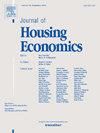区位、区位、结构类型:小区内租金分化
IF 2.4
3区 经济学
Q3 ECONOMICS
引用次数: 0
摘要
住房租金占家庭预算的很大一部分,对整体通胀也有很大影响。因此,租金测量的准确性在这些和其他情况下是必要的。区位-区位-区位假设表明,一个社区内的租金平均会以同样的速度增长;先前的研究在理论上假设了这一假设,并在经验上支持了这一假设。我们的研究表明,即使在同一个社区,不同类型住房单元的租金通胀率也会在数年内有所不同。在2010年代,公寓租金普遍超过独立单元租金;这一模式在2019冠状病毒病大流行期间发生了逆转,为关于后一时期的主流叙述提供了细微差别,其中大多数是针对特定地点的。这些动态表明,结构代表性对于租金指数的准确性和准确的通货膨胀测量是必要的。即使是基于仔细地理抽样的指数,如美国消费者价格指数(CPI)在2023年之前的业主等效租金组成部分,也可能因为与独立单元租金相比过于看重公寓租金而存在偏见。我们证明这种偏差可能相当大,并提出建议-其中一个最近被CPI接受。本文章由计算机程序翻译,如有差异,请以英文原文为准。
Location, location, structure type: Rent divergence within neighborhoods
Housing rents are a large share of household budgets and make a large contribution to overall inflation. Hence rent measurement accuracy is necessary in these and other contexts. The location–location–location hypothesis suggests that rents within a neighborhood would grow at the same rate on average; prior research has both theoretically assumed, and empirically supported, this hypothesis. We show that, even within the same neighborhoods, rent inflation rates for different types of housing units often differ for years. Over the 2010s, apartment rents generally outpaced detached unit rents; this pattern reversed during the COVID-19 pandemic—providing nuance to prevailing narratives about the latter period, most of which are location-specific. These dynamics suggest that structural representativity is necessary for rent index accuracy and accurate inflation measurement. Even indexes based on careful geographical sampling, such as the United States Consumer Price Index’s (CPI’s) Owners’ Equivalent Rent component prior to 2023, may be biased by placing too much weight on apartment rents compared to detached unit rents. We demonstrate that this bias may be quite large, and offer recommendations — one of which was recently accepted by the CPI.
求助全文
通过发布文献求助,成功后即可免费获取论文全文。
去求助
来源期刊

Journal of Housing Economics
Multiple-
CiteScore
3.30
自引率
4.20%
发文量
35
期刊介绍:
The Journal of Housing Economics provides a focal point for the publication of economic research related to housing and encourages papers that bring to bear careful analytical technique on important housing-related questions. The journal covers the broad spectrum of topics and approaches that constitute housing economics, including analysis of important public policy issues.
 求助内容:
求助内容: 应助结果提醒方式:
应助结果提醒方式:


